Kumquat Preserves
A Study in Understated Elegance
Undeniably, the humble kumquat is the Cinderella of the citrus world.
Google will regrettably back me up on this bold claim. And this is a dreary
state of affairs as the limits of what the enthusiastic kumquat can achieve are
solely dependent on the intrepidity
and sense of adventure of an imaginative cook.
In South Africa, Pretoria in particular, we
seldom see the fresh fruit and then mostly only at the larger fruit & veg
suppliers. Now and then we see the preserves or marmalade at farmers’ or family
markets – often in various combinations with orange, ginger or lemons. This is
a crying shame, as the kumquat’s inherent flavour and exuberant taste is unique,
pure and hard to dominate. It does not require ‘dilution’ with other other
fruit, nor all sorts of bells & whistles to impress and delight.
For the benefit of the un-initiated: kumquats
are eager to please and demonstrate their abilities –
- By themselves: The ripe, fresh fruit are
laughably easy to eat. Remove the stem base, rinse and pop in the mouth for an
explosion of piquant sweet & sourness and an undertone of citrus bitterness,
all striving in unison to elevate and accentuate the unique citrus flavour and
taste.
- In combinations: In most greens-based salads,
slices of the fresh fruit will work well in combination with a smoked or
pickled protein such as smoked chicken breasts; oven roasted bacon, salted beef
tongue or peppered ham – particularly in the company of a honey & mustard
dressing. Remove the pips beforehand as they have that spirit crushing
bitterness so deeply characteristic of all citrus fruit seeds.
Add slices of very ripe kumquats to your best-of-the-best fruit salad and experience how your creation soars to sublime elevation. Do remember to add a dash of Atlantic sea salt to your fruit salad? And if your audacity burns high and bright: sneak in two quick turns from your black pepper mill. Seriously! Try it and see what happens...
Discard the twist of staid old lemon for your Martini and add a dash of freshly chopped kumquat to the interior workings of that Martini’s cocktail mixer. Shake vigorously, pour, sit back and contemplate that arch-conservative old martini suddenly doing the conga lustily deep into the sweaty night. - As a preserve or marmalade: Spread good
quality butter over lightly toasted rye bread, follow with a generous covering
of marmalade or drained preserve and finish off with fragments of mild, creamy
Gorgonzola for an experience that should be near the very top of anyone’s bucket
list. Serve the preserved kumquats and slivers of hard Pecorino (or even Grana
Padano) on excellent, well toasted Sandwich Bread – accompanied by milky Earl Grey – for a hint
of how the ancient Olympian gods must’ve started their days.
Add a few pieces of this preserve right at the end of cooking to braised oxtail, osso buco or a savoury beef casserole and study your guests surreptitiously for signs of unrestrained curiosity. The syrup from the preserves also serves very well as a simple glaze for oven roasted chicken, frequently painted over during the last 20 minutes of roasting – particularly if that whole bird’s behind is stuffed with lemon quarters and sprigs of fresh rosemary.
For a triumphal finish to any dinner, place a single layer of kumquat preserve slices (and a dab of syrup) in the bottom of each Crème Brule ramekin. It will be an illustrious, well suited addition to one of the true giants of the Culinary world.
Add pieces of chopped preserve to the batter of any baked (or steamed) orange dessert, or plain Jane old Malva pudding, and experience some serious improvement in your culinary standing. Bake Orange Syrup & Kumquat Ring Cake and bask in the relentless adulation of your peers.
 |
| Orange Syrup & Kumquat Ring Cake |
However, in my opinion, the roll as fruit preserve is where the kumquat’s
underestimated talents brilliantly rise to the occasion. The cooked fruit in
syrup has a unique flavour: somewhat dusky and a little recalcitrant, yet with
unmistakable presence and gravitas. The preserve reminds me quite strongly of
the deceptively simple, lyrical prose of Gabriel Garcia Marquez – redolent with
semi visible undercurrents and the constant, hinted promise of a smattering of
simple magic. Kumquat preserve is in stark contrast to the Charles Bukowski-like,
dark surliness of the common English bitter marmalade.
This recipe is for a preserve – also known as fruit conserve – and not marmalade.
The difference is the presence of pectin, either natural (from the pips and or
peel) or artificial (commercially refined fruit pectin). Pectin provides the
setting ability that characterises the viscous, jelly-like consistency of most
jams. Preserves are generally fruit boiled up in simple sugar syrups of varying
sugar concentrations, depending on intended use, and can be quite runny to syrup
like in appearance.
The quantities of spices are intentionally kept low to support (and
accentuate, in my opinion) the unique flavour and taste of kumquats as opposed
to modifying or dominating said flavour and taste profiles.
Recipe yields:
± 1L Preserves
|
Preparation & cooking
time:
± 3 Hours
|
Difficulty level:
Easy Peasy!
|
Special Equipment Required:
1
x Sharp pointed tweezers or pincette
1
x Metal, long handled, slotted spoon
Ingredients:
Kumquat fruit
|
1.25Kg
|
White sugar
|
800g
|
Green cardamom seeds,
crushed
|
3
|
Cassia bark pieces
|
3
|
Dried star anise pod,
medium sized
|
1
|
Water
|
±350ml
|
Salt
|
5ml
|
Method:
- Rinse the fruit under cold, running water. Spread out on a clean, dry dish cloth and inspect all fruit for damage or spoilage. Kumquats are similar to mandarins in their ability to spoil very rapidly while no one is paying attention.
- Remove the stem bases with a sharp, thin bladed kitchen utility knife.
- Cut each fruit into 3 – 4 slices (depending on size) cross wise. Use tweezers or a pincette to remove and discard the pips. This will take some time.
- Combine the sliced fruit, sugar, cassia bark, cardamom and star anise in a suitably sized sauce pan. Add the water – just enough to become visible between the fruit slices – and place, uncovered, over medium low heat. Stir frequently with a wooden spoon until the contents starts to boil.
- Decrease the heat until the contents are just simmering. Partially cover the pan with the lid as the sugar syrup is prone to boiling up and over when the pan is fully covered. This will be messy.
- Simmer until the fruit are soft and translucent, 45 – 60 minutes. Stir gently occasionally. Make sure the spices are fully submerged in the gently simmering liquid.
- Remove from the heat when ready and add the salt. Stir briefly to dissolve. Discard the star anise pod.
- Sterilize the glass bottles or jars by filling each to the top with boiling water and letting it stand for 5 minutes. Pour the hot water out, turn upside down and allow to cool and dry until needed. Alternatively, heat the glass bottles (and their lids) for 10 – 15 minutes in a pre-heated oven at 120°C.
- Arrange the dry, sterilized glass bottles or jars in a suitably sized roasting or Swiss roll pan. Use a slotted, long handled, metal spoon to nearly fill each container with boiling hot fruit ladled directly from the sauce pan. Use a normal spoon to fill each glass container with hot syrup. Make sure no air bubbles are trapped amongst the fruit slices. Refrigerate any left over syrup.
- Put the lids on and tighten very well using oven mitts or two dry kitchen cloths. Take care as the bottles will be very hot! Allow to cool down to luke warm and rinse the filled, sealed containers with warm, running water to remove any syrup spillage on the outside. Dry off and set aside to cool down to room temperature. Label (with production date included) and store out of direct sunlight.
Comments:
- Use a wooden spoon to stir the simmering fruit as the semi-sharp edge of a metal spoon will soon damage the fruit slices and the attractive pinwheel appearance of the slices will be lost.
- The recipe calls for cassia bark as it’s subdued flavour supports the cooked fruit as opposed to the bold, insidiously overpowering flavour of cinnamon quills that will dominate and suppress the more subtle notes of the cooked kumquats.
- Store the bottled preserves away from direct sunlight as the preserve will gradually darken (and loose it’s burnt orange appeal) when exposed to full sunlight.
Cassia Bark
Also
known as Chinese cassia or Chinese cinnamon and originating from the evergreen
tree Cinnamomum cassia.
A
certain degree of confusion reigns in the culinary world about the nature (and
differences) of cassia bark and “true” cinnamon. All forms of cinnamon (powder,
bark or quills) come from the same group of related trees, the Cinnamomum species, mostly found in
southern China and South East Asia – primarily Indonesia, Sri Lanka (formerly
Ceylon) and Vietnam. Confusingly, most of what is sold as cinnamon powder, and
sometimes quills as well, is often ‘diluted’ with ground cassia or it’s
relations. Sad but true.
Cinnamomum verum is often regarded as
“true” cinnamon and is sold as a reddish brown powder or papery quills
consisting of many layers of rolled up, dried bark, 5 cm – 10 cm long. The
flavour is richly aromatic, penetrating, insidiously sweet and delicate,
sometimes with a bitter undertone.
Cassia
bark on the other hand has a less complex, more robust and less sweet flavour
than cinnamon. The bark is often sold as coarse, hard shards that are smaller
than the usual cinnamon quills or sticks. This leads to the perception that
it’s flavour intensity is less than that of “true” cinnamon when the opposite –
in a weight for weight basis – is actually true. This perceived, reduced
flavour intensity makes cassia bark shards ideal for preserves, jams, jellies
or syrups where the oft invasive, gradually overpowering intensity of true
cinnamon would be undesirable.
Be
careful with grinding cassia bark in a spice grinder or blender as the bark is
considerably harder than true cinnamon and may damage the machine. Crush the
bark before hand with a meat hammer or wooden mallet.
Sources:
1.
Cassia bark; https://en.wikipedia.org/wiki/Cinnamomum_cassia; Retrieved 27/09/2017.
2.
Cinnamon; https://en.wikipedia.org/wiki/Cinnamon; Retrieved 27/09/2017.
© RS Young, 2017
– RECIPE INDEX PAGE –
Follow Me on Facebook
Note:
Post
updated on 2024.03.18 to include:
1.
The updated Recipe for downloading as a PDF file, and
2.
Recipe Title and Print Recipe, Recipe Index and Facebook & Pinterest follow
links.


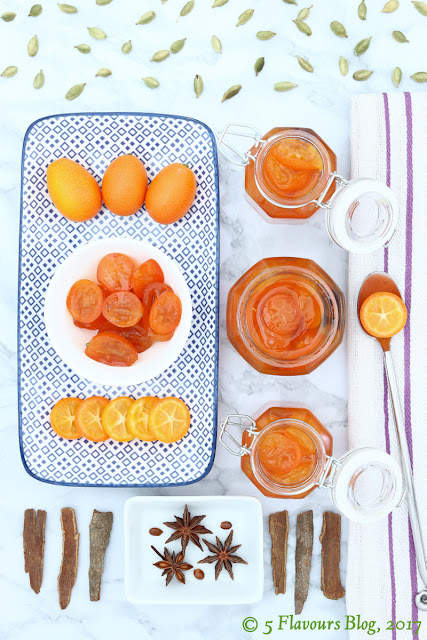
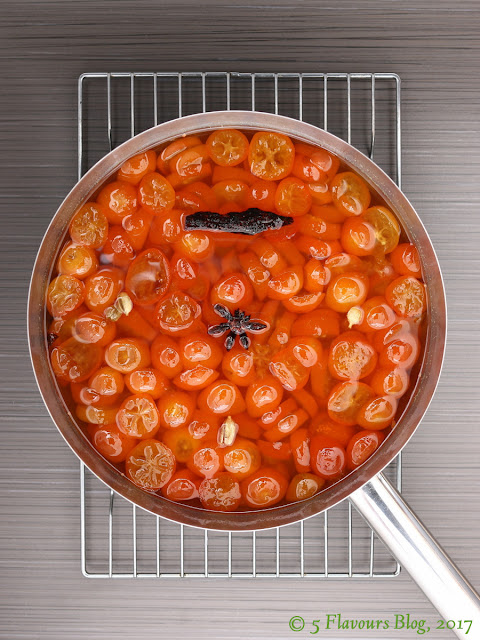
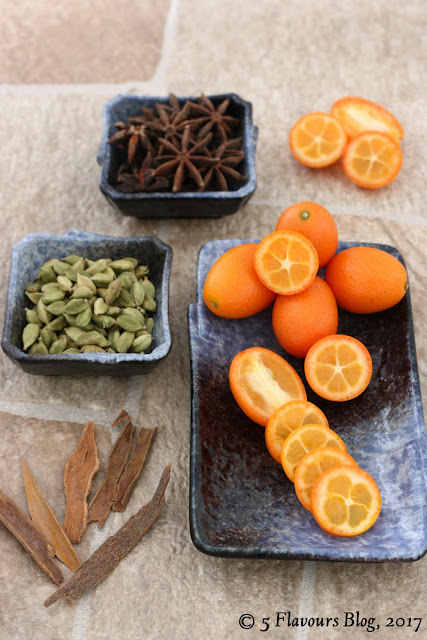
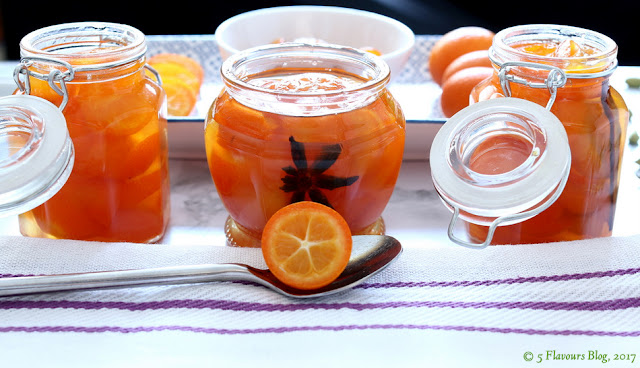


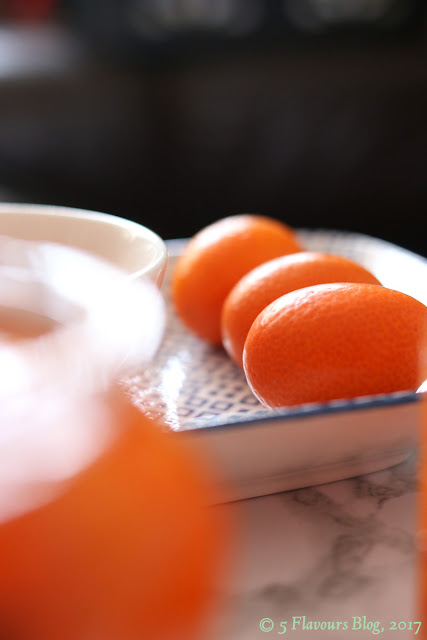
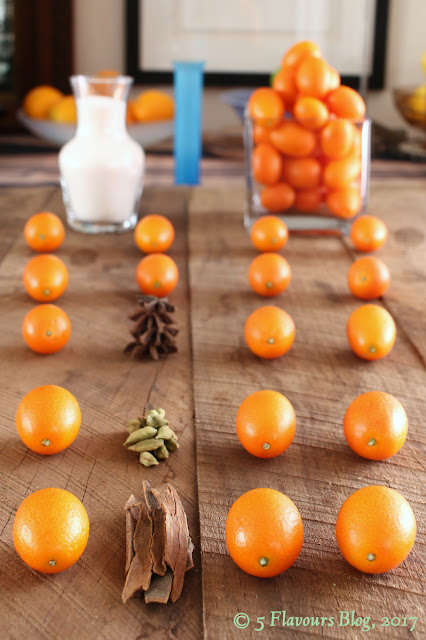
Comments
Post a Comment